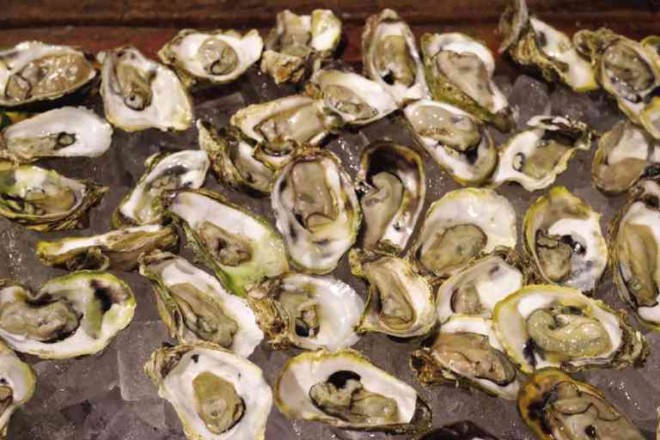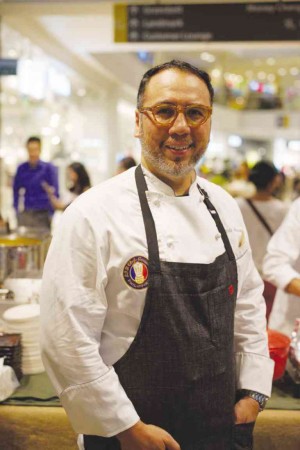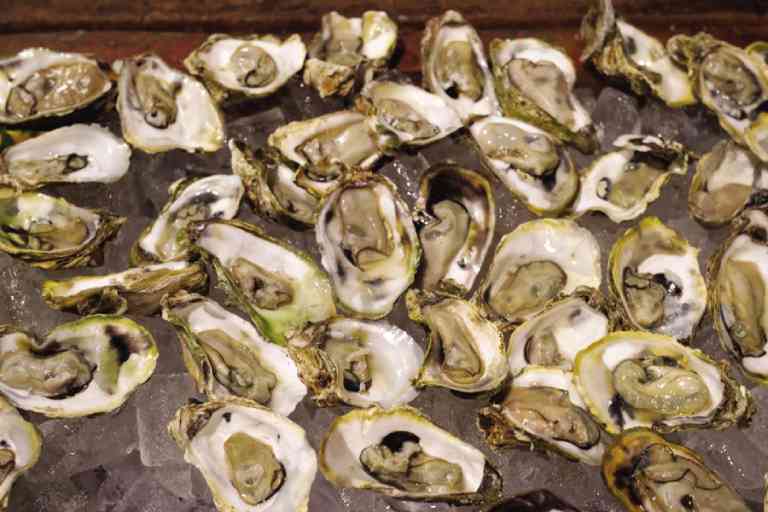
No one cooks, eats and organizes events like Christina Gaston, president of the Association of Negros Producers, one of the prime movers behind the 30th Negros Trade Fair held recently in Glorietta, Makati.
On the preview night before the event formally opened to the public, a handful of prominent Negrense chefs were invited to cook for the guests and replicate a bit of the buzz they had made during the Visayas day at Madrid Fusion earlier in the year.
When people abroad ask me what province I’m from, I always feel a little bad because I was born and raised in Manila. It seems doubly unfair when people are as proud to come from their province as the Negrenses are.
With their wealth from the sugar plantations, their strategic location for shipping, and lavish and abundant cuisine, the 19th-century Negrenses didn’t have much need for Manila; and even these days, I’m surprised that they do.
For those unable to fly down and immerse themselves in history and marinate their food in chicken fat—something I used to try and do every year—the loose aggregation of chefs who strut their stuff at events such as the Negros Trade Fair serves as a good sampler of what you’ll find if you make your way to the province.
Rather like Basque or Provençal food, Negros food doesn’t really travel well. You can have a pretty good Provençal meal in Paris, or Taguig, but it will never taste the way it did in Aix or Avignon. It can come very close in terms of flavor, but continue to remain unconvincing in terms of spirit. (In contrast, an example of a cuisine that travels well is Cantonese, which even improves in places such as Vancouver, where it benefits from Pacific Northwest seafood.)
The best sort of Negros food to eat outside of its boundaries, especially in the crazy urban frenzy of Manila, is an urbane, evolved version. This does not mean bastardized—it means that it’s authentic, but it knows that it’s away from home and behaves accordingly.
During the 1990s, Margarita Forés became known for her authentic Italian food that wasn’t snooty and that Filipinos could relate to; of late she has evolved as one of the most prolific transcribers of her native Negros’ culinary repertoire into contemporary, urbane ideas.
‘Lechon’ with rum
For the trade fair she brought in lechon stuffed with mango leaves and a bottle of Don Papa rum; the taste of distilled spirit had infused the pork’s flesh with its sugary, heady aroma. I also managed to snag a bowl of kadyos cooked in a dark duck broth.
JP Anglo of Sarsa (and, more recently, Kafe Batwan in Rockwell) did only one dish, but was getting slammed at his booth because he was making them to order, there were a lot of different ingredients involved, and there was a long queue for this invention that best represents the kind of innovation he is doing at Kafe Batwan.
Very often, variations on classics make you wish that they had stuck with the original; Anglo’s pancit palabok leads you to understand that the idea behind the dish is a template that can withstand infinite permutations.
Antonio’s is always a bit of a surprise at these affairs because one tends to forget that he’s also from Negros. I understand that he has opened a new wing for Filipino food at his Tagaytay hive of restaurants.
Cyrille Soenen was also unexpected, but his wife is Negrense and he has been busy turning the dessert that everyone loves him for, the buttery kouign-amann, into a lucrative business empire. Who would have known that they go so well with everything, particularly Filipino food?
Young roast lamb

But the star of the evening was Fernando Aracama, who, like JP Anglo, had prepared only one dish. He described the base as a childhood favorite of ground corn, like a porridge; the menu card had it down as grits; it tasted like polenta.
On it was tender, young roast lamb; but flavorful enough so that it would never have been mistaken for pork. And on top was a salsa verde, pickled red onions and a rich sauce. And everyone agreed it was the best dish of the evening.
It also best represented the rootedness in regional ingredients and techniques and inventiveness that keeps this trade fair from being a drudge of old reruns.
I was pleased to see solar energy being exhibited beside traditional arts and crafts, and interesting new bottled and packaged food items that went beyond the usual piayaya and sea urchin.
For Manileños, especially those who never had a home province, it’s a taste of the land and the sea, and a richness that, far away in a city that has become insufferable, reminds us of what we love most about the Philippines.














































